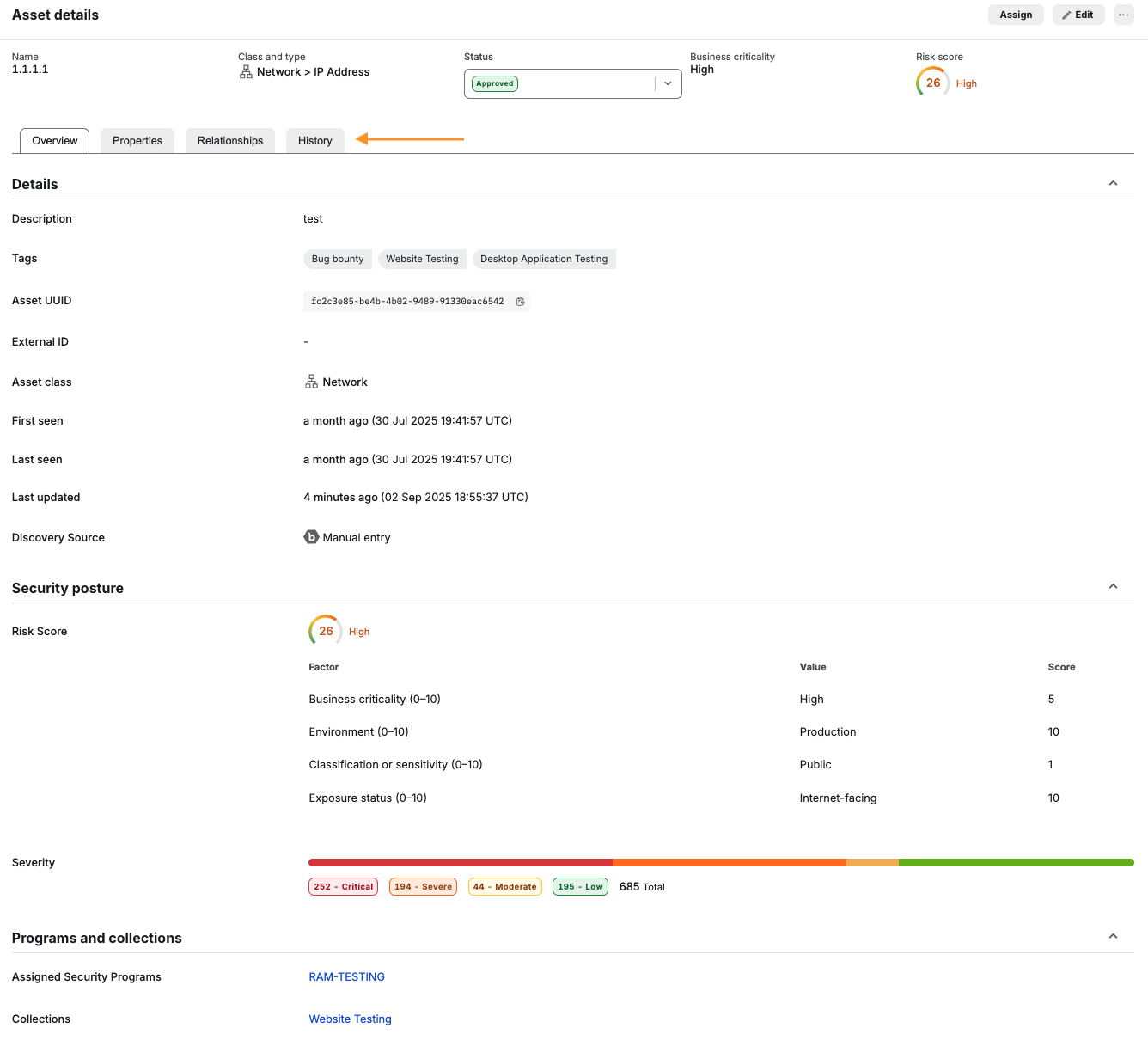The Asset Details page provides a comprehensive view of a specific asset in your Bugcrowd organization. From here, you can review metadata, track history, assess security posture, and make updates.
Navigation
- Log in to your Bugcrowd organization.
- Go to Assets.
- Select any asset view page (e.g., All assets, Domain, Network, Service).
- Click on an Asset Name
- The Asset Details view will open.

General Information
At the top of the Asset Details page, you’ll find high-level information about the asset:
- Asset Name & Type: Displays the class and type (e.g., Network > IP Address).
- Status: Current lifecycle state of the asset (New, Approved, Rejected, Deprecated, Investigate).
- Business Criticality: Indicates the asset’s role in business operations.
- Risk Score: Displays the current score and severity (Low, Moderate, High, Critical).
Available Actions
From the top of the Asset Details page, you can:
- Assign: Add the asset to a Bugcrowd Security Program.
- Edit: Edit details (Details, Programs and Collections, Security Posture, and Properties).
-
Row-Level Actions (⋮ menu):
- Unmark as Primary Domain (only shown if a zone is designated as primary)
- Edit tags
- Add to collection
- Archive asset

Tabs in Asset Details
The Asset Details page contains four tabs with detailed information:
Overview
Provides general information and security posture.
Details
- Asset Name & Type
- Status
- Business Criticality
- Risk Score
- Tags
- Discovery Source (Bugcrowd EASM, Data import, Manual entry)
- Timestamps: First seen, Last seen, Last updated
Security Posture
- Risk Score (0–40): Numeric score calculated from key factors
- Factors: Business Criticality, Environment, Sensitivity, Exposure Status
- Values & Scores: Each factor scored 0–10
- Vulnerabilities: Count of issues by severity (Critical, Severe, Moderate, Low)
Programs and Collections
- Assigned Security Programs
- Assigned Collections
Properties
Displays asset-specific technical details. This section updates dynamically depending on the asset type.
Relationships
Shows linked data and dependencies:
- Associated domains
- Associated records
- Associated IPs
- Open ports
Clicking an associated object will open its Asset Details view.
History
Provides a full audit trail of changes, including:
- Date/Time: When the update occurred
- Edited Field: Attribute changed
- Previous vs. New Values: Before/after change
- User/Source: Who made the change (manual entry or integration)

Best Practices
- Regularly review Risk Score factors to ensure accuracy.
- Use tags with asset details for easier filtering across large inventories.
- Use the History Tab for compliance and audit reporting.
- Monitor Relationships to keep dependencies and exposures up to date.
